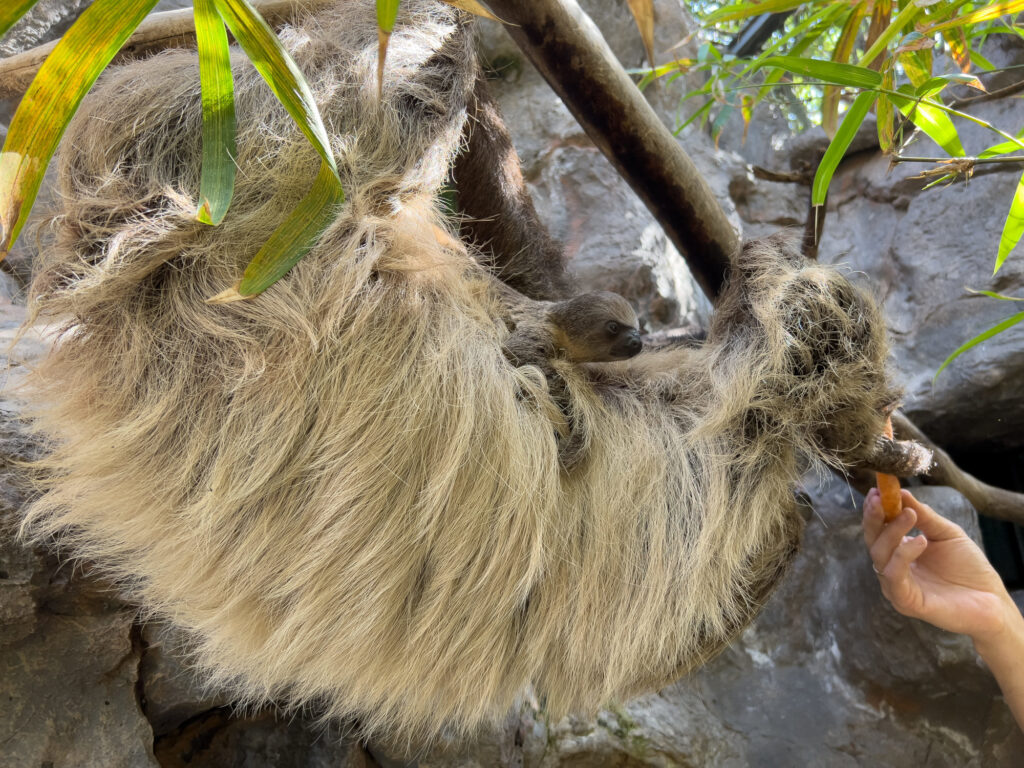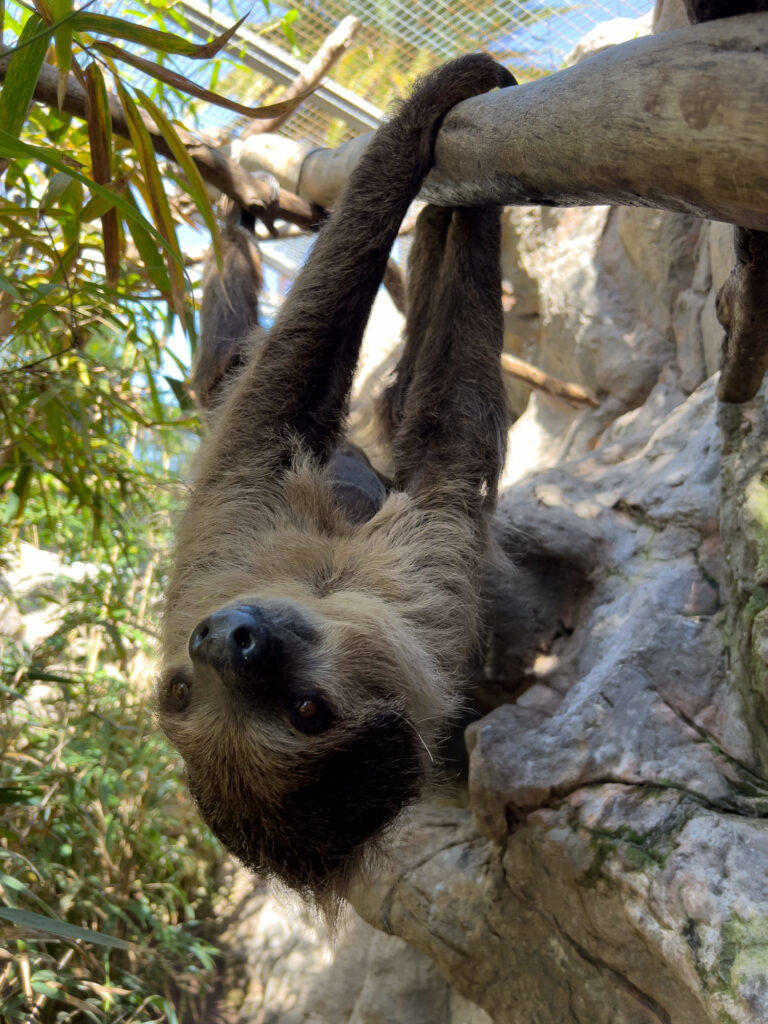Loro Parque Zoo has announced this week the birth of a new two-toed sloth (Choloepus didactylus), renewing its commitment to biodiversity conservation.
The new arrival, born on 27 January, is in perfect health and is being cared by keepers and veterinarians to ensure his well-being and growth. In the coming weeks he will begin to eat solid food and explore the tropical ecosystem created for his species in the park.
The mother of the calf, Pauline, arrived at Loro Parque in 2021 from Vienna’s Schoenbrunn Zoo to pair up with one of the park’s males, Hugo. The birth that has resulted from this union is a great success for the centre and, in particular, for the conservation work of the species.

Sloth cub resting on its mother’s belly while she gets food from her keeper
The transfer was part of the EAZA Exsitu Programme (EEP) of the European Association of Zoos and Aquaria (EAZA), a European programme for the conservation of animal species under human care, in which zoos and aquariums share plans for the management of the species, with breeding and care recommendations, among others.
“Our commitment to conservation and animal welfare is reflected in these milestones in breeding and rearing, as well as in our research projects, with which we contribute to the preservation of endangered species,” says Dr. Javier Almunia, director of Loro Parque Fundación.
This is confirmed by this new two-toed sloth, a species from South America, which will share space with other species, such as marmosets, iguanas and armadillos, in a facility that recreates the natural environment.
The sloths of the Canary Island Zoo are slow-moving, calm animals that live in the branches of trees. In addition to the sloth, Loro Parque Fundación also contributes continuously to the survival of other endangered species, such as the Lear’s macaw or the Atlantic humpbacked dolphin.
“Successful breeding and rearing under human care will be fundamental to ensure the survival of some animal species in the future, and Loro Parque is a leader in this field. We are very proud of our achievements in protecting biodiversity and of our role in educating and raising awareness of the importance of preserving the planet’s fauna and flora,” concludes Almunia.

The mother of the sloth at the Loro Parque facilities with her cub resting on her belly










